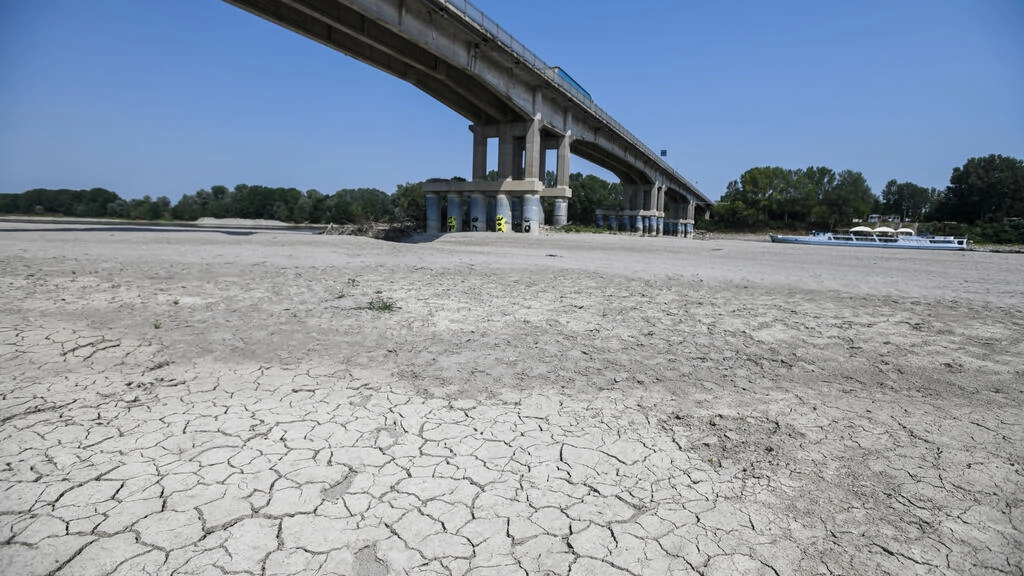Parts of northern Italy are in the grip of the worst drought in 70 years. The River Po, Italy’s longest, is at risk of drying up.
With hardly any rain in the last 110 days, EuroNews is reporting that the River Po is three meters lower on average. The drought is having unprecedented effects, with water being rationed in 125 municipalities across the region.
The record lows have prompted emergency measures to be imposed across the regions of Piedmont and Lombardy. In some stretches of the river, the water is so low that curious residents wander along the expanse of exposed sand.
According to Forbes, the drought has been exacerbated by the lack of snow in the Alps, which would normally melt throughout the spring and summer replenishing the river. Lake Maggiore, the second largest lake in Italy and the largest in southern Switzerland, is nearing its lowest level since 1946.
In a park near the central northern village of Gualtieri, cyclists and hikers stop in curiosity to observe the Zibello, a 50-meter long (164 feet) barge that transported wood during the second world war but sank in 1943. It is normally covered by the Po’s waters.
“It’s the first time that we can see this barge,” said amateur cyclist Raffaele Vezzali as he got off the pedals to stare at the rusted ship. Vezzali was only partially surprised, though, as he knew that the lack of winter rain caused the river to reach record low levels, reports the Associated Press.
Crops and food supply at risk
The River Po stretches 652 kilometers (405 miles) from the Alps in Piedmont right across northern Italy to reach the wild oasis of the Po Delta and the Adriatic Sea on the east coast.
As the river flows to the sea, it provides drinking water for hundreds of municipalities, irrigates large swaths of agricultural land, and generates important hydroelectric power supplies.

The Po Valley, much like California”s Imperial Valley in the United States, is an important agricultural zone for the country. The Po Valley produces some 40 percent of Italy’s food including wheat, tomatoes, and grapes.
Farmers are struggling to keep crops irrigated. Rice, one of the most important products of the Po Valley, is particularly at risk. The paddy fields need to be flooded with water for the plants to grow, but supplies are scarce.
The Italian Farmers Confederation has warned there will be a 30-40 percent reduction in yields of fruit and vegetables in the Po Valley as a result of the drought situation
The water levels in the River Po continue to drop daily, and there is little hope of the situation turning around. No rain is forecast and areas of northern Italy are set to experience a heat wave of temperatures up to 36 degrees Celsius (96.3 degrees Fahrenheit) in the coming days.














